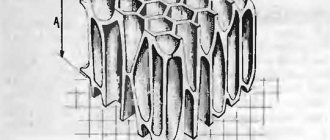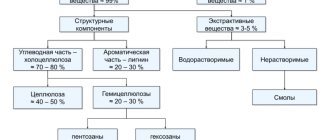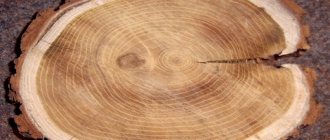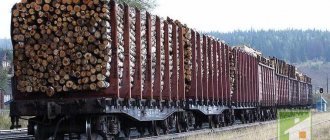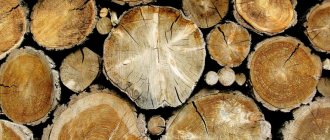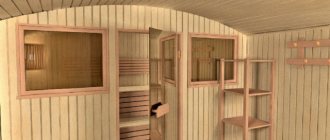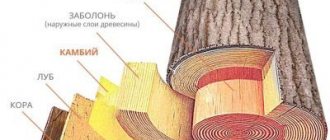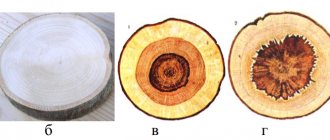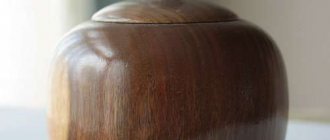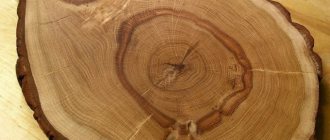We studied the structure of plants in school. In this article, we decided to remind you what a tree is and talk about each of its parts: cells and tissues, wood and bark, branches and twigs, leaves and roots.
The material was taken from the first Russian-language edition of the European Tree Worker handbook , which will be useful both to owners of nurseries and garden plots, and to certified specialists.
Wood concept
Wood is the hard tissue of a tree or shrub without bark. The main mass comes from the trunk. Wood consists of layers located from the core to the bark. They are a complex tissue in which moisture with microelements flows through the vessels from the roots to the crown.
As the tree grows, its central part gradually dies. The vessels passing through it also gradually become clogged.
Based on the location of large vessels, wood is divided into:
- Ring-vascular - elm, acacia, oak - the largest vessels are located at the center. The wood of ring-vascular trees is heavy and durable.
- Scattered vascular - beech, birch, rowan - the vessels are distributed almost evenly.
In the wood of most plants, the so-called growth rings (annual or annual) and pith (radial) rays are clearly visible. Within the tree ring there is an early zone, which forms in the spring, and a late zone, which forms in the summer. Water containing nutrients and substances moves along the core rays.
The composition and structure of wood is studied by sections; they come in three types:
- Transverse (end) – made across.
- Radial - produced directly through the core along.
- Tangential - without touching the core, parallel to growth.
Bark diseases
Trees, like people, are susceptible to various diseases. What causes them? There are many reasons why trees get sick. An indicator of their health is the bark of the tree. She, like human skin, is very vulnerable. But, unfortunately, she is not able to take care of herself. The bark provides this care to a person, giving him a bountiful harvest in the future or delighting him with his appearance. The protective layer of the trunk is damaged by infectious diseases, pests, animals, frost, and sunlight. And sometimes it simply does not keep up with the growth of the plant and cracks, forming deep wounds. Only good care and timely treatment will prevent the tree from dying.
Tree trunk: its structure
The barrel consists of the following elements:
- The bark is the outer surface layer.
- Bast is located under the bark (under its cork layer) and covers the sapwood.
- The cambium is the active cellular layer in which cell division occurs in spring and summer. From mid-autumn and winter, division stops until next spring. The process is clearly visible in a cross section. This is how tree rings appear.
- Sapwood – it delivers nutrients and moisture upward from the roots to the crown.
- The core is mature wood. Physiological processes do not occur in the nucleus. The layer is considered "dead". The core of softwood contains a lot of resins. Darker in color than sapwood.
- The core is relatively soft and loose, protected by hard layers.
A young tree trunk consists of a soft and moisture-saturated layer - sapwood. Gradually, part of the sapwood dies and a core forms.
Tree species that have a core are called sound trees (almost all conifers, some deciduous). Tree species in which the core dies, but its color does not change, are called mature wood (aspen, spruce).
In the third group of trees, the core does not die; they are called “sapwood” or “coreless” (birch, pear). There is a false heartwood in the wood of some deciduous trees (birch, alder). It differs from the present one in that it can cross the contours of tree rings.
Proper tree pruning
Fig.1 Correct trimming
In this article we will talk about the features of pruning at the base of the branch and pruning parallel to the trunk. You will find out why nowadays experts prefer the first method of pruning trees.
Leaves
Leaves are responsible for producing nutrients for the tree. They contain a chloroplast filled with a green pigment - chlorophyll , with the help of which photosynthesis occurs. Another function of leaves is transpiration , which is the removal of water through the leaves through evaporation.
Leaf structure: 1 – Stomata 2 – Cuticle 3 – Epidermis 4 – Palisade parenchyma cells 5 – Spongy parenchyma cells
The leaf area is large enough to allow them to absorb sunlight and carbon dioxide needed for photosynthesis.
The outer surface of the leaf is covered with a waxy layer called the cuticle . It serves to minimize dessiccation (drying) of the leaf.
Water evaporation and gas exchange are controlled by stomata - small holes on the surface of the leaf.
The leaf has a developed system of conducting tissues, including veins or capillary channels. Veins are composed of both phloem and xylem tissues and are responsible for transporting water and vital substances, as well as transporting nutrients produced in leaf cells to the rest of the tree.
This is interesting
Trees that shed their leaves every year are called deciduous, while those that retain them for more than one year are called conifers or evergreens. Leaf shedding is caused by cellular changes and growth regulators that form the organ separation point at the base of the petiole, or leaf stalk.
The leaf separation point has two functions:
- ensures shedding of leaves in autumn;
- prevents drying out, spread of disease and damage to the part of the plant from which the leaf is torn off.
In autumn, the change in color of the foliage of deciduous trees is associated with the decomposition of chlorophyll, allowing other pigments contained in the leaves to appear. Reduced daylight hours combined with cold nights lead to increased accumulation of sugars and slow down the production of chlorophyll. This process allows other pigments, including anthocyanins (red and purple) and carotenoids (yellow, orange and red), to appear.
Roots
Tree roots perform four main functions:
- fixing the tree;
- accumulation of energy and nutrients;
- absorption of substances;
- transportation of substances.
End of the root: 1. Lignified root 2. Root hair 3. Root tip 4. Root cap
Suction roots are small, fibrous sections of tissue growing at the ends of the main woody roots. They have epidermal cells modified into root hairs that help absorb water and minerals. Root hairs do not live long at all (3-4 weeks in the spring) and significantly activate the ability to absorb substances with the onset of the growing season in the spring.
As for root tips, they contain a meristem , where cells divide and grow in length.
Roots grow where they can find air and oxygen. Most of the suction roots are located at a distance of 30 cm from the soil surface. Also near the surface are horizontal lateral roots.
Anchor roots grow vertically downward from the lateral roots, providing reliable fixation of the tree and increasing the depth of soil development by the root system.
Root system: 1 – Tap root system 2 – Fibrous root system 3 – Superficial root system
The roots of many plants are in symbiosis with some fungi. The result of such a relationship is called mycorrhiza (fungal root) . The symbiosis of two organisms (tree and mushrooms in our case) is based on mutual benefit: mushrooms receive nutrients from the roots and, in turn, help the roots absorb water and vital elements.
| See also: |
Properties of wood
The main properties are divided into:
Mechanical
- Strength – resistance to destructive mechanical forces. With transverse impact, the strength decreases up to 8 times.
- Elasticity is the ability to resist changes in volume and shape under mechanical forces. Depends on the uniformity of the layers and the size of the radial rays. Elasticity is affected by humidity.
- Viscosity is the ability to bend without breaking. Increases with increasing humidity.
- Degree of resistance to deformation.
Physical
- External (for example: color, texture, smell).
- Hygroscopicity is the ability to release and absorb moisture.
- Density. Depends on humidity. The optimal humidity level is no more than 15%. High density provides good strength.
- Hardness is the ability of wood to withstand the effects of solid bodies (screws, nails). Calculated by the Brinell method or Janck method. The density and direction of the fibers in the affected area affect the hardness. There are 5 types of hardness: very soft (fir), soft (birch, linden), medium hard (elm, walnut), hard (ash, apple, cherry), very hard (sucupira, mutenia, yew). The hardness of larch is compared to stone.
- Thermal conductivity.
- Sound conductivity
- Electrical conductivity.
Chemical: Resistance to acids and alkalis, gases. Hardwoods contain less cellulose than softwoods. This explains their reduced chemical resistance.
Technological
- Ability to hold metal fasteners (nails, screws).
- Wear resistance (the ability not to be destroyed by friction). The drier, harder and denser the wood, the higher the resistance to wear.
- Plastic.
- Resistance to splitting (dividing into fibers under the blows of a wedge). Increases with viscosity.
What does the stem consist of?
The structure of the stem of a woody plant includes 5 sections:
- Cork;
- bast;
- cambium;
- wood;
- core.
Cork
In only sprouted plants, the outer layer is represented by a skin, which, over a certain time, is replaced by a cork. The skin protects the stem from moisture evaporation and the action of harmful microorganisms that lead to plant diseases.
Stomata are located on the surface, necessary for effective gas exchange. Direct absorption of oxygen is carried out thanks to lentils - small tubercles on the bark, equipped with a hole. They are formed from cells with large intercellular space. Under the skin there are green cells (they contain chloroplasts). After formation, the corks turn white and are classified as bast.
Functions of the cells of the outer cover of the stem: photosynthesis, protective, gas exchange.
Lub
The bast is divided into soft (includes the conducting system and parenchymal structures) and hard. The color is whitish; the following structural units of the bast are distinguished: sieve tubes, bast fibers, cells of the main tissue.
Sieve tubes are a collection of cells that have many holes on their surface through which organic substances flow.
Bast fibers are mechanical tissue; they have elongated cells with a dense wall. Gives plants flexibility and strength.
Cambium
Between the outer and inner balls of cells there is educational vascular tissue - the cambium. The precambium of the primary structure of the plant serves as the basis for tissue formation.
Cambium cells have an elongated shape, the cytoplasm is colored green, and the nucleus is spindle-shaped. On a section, you can see a circular layer of educational tissue, but true cambial cells form a single-layer ball, because after division only one cell retains the properties of the original one.
Stem structure
Wood as a building material
Positive properties of wood as a building material:
- Strength at relatively low density.
- Good thermal insulation properties (low thermal conductivity).
- The specific strength is close to that of steel and higher than that of brick and concrete.
- Hardness is close to unhardened steel.
- Weakly subject to linear expansion.
- Durability.
- Weakly susceptible to mechanical vibrations.
- Excellent conductivity of radio waves.
A serious disadvantage is the heterogeneity of the wood, which leads to swelling, deformation, and drying out.
Nowadays, wood preservation methods guarantee longevity. The manufacturing technology of laminated veneer lumber almost completely eliminates this disadvantage.
Infectious diseases and their treatment
How to treat tree bark for black cancer? First of all, the source of infection is eliminated. To do this, you need to burn all the fallen leaves. Fungal spores live in them even in winter. When annual pruning of diseased branches is carried out, garden tools must be treated with copper sulfate to prevent infection.
If the tree bark is damaged by cytosporosis, you need to remove the affected area and treat the area with copper sulfate. Then cover it with varnish and bandage it with a clean, dry cloth.
Wood defects
Wood defects include:
- Presence of knots.
- Natural and acquired cracks.
- Trunk curvature.
- Uneven arrangement of fibers, altered shapes of growth rings.
- Lesions caused by fungi (staining and destructive fungi).
- Presence of biological damage (wormhole).
Arrangement of leaves on the stem
The areas of the stem where leaves develop are called nodes. Several leaves can grow from one node, this determines their location.
The next thing is that one leaf sprouts from one node; they are placed spirally on the stem and do not interfere with the flow of sunlight to the underlying leaves (birch).
Opposite - two leaves are in the same node, opposite each other (mint).
Whorled - one node has three or more leaves, this arrangement is quite rare (crow's eye).
Arrangement of leaves on the stem
Types of bud arrangement on the stem
Apical - the bud is located at the top of the shoot.
The lateral location is divided into axillary and accessory.
Axillary buds are formed in the axils of the leaves, their number corresponds to the number of leaves on the stem, and adventitious buds are located in the internodal areas, roots, and leaves. With their help, vegetative propagation of plants is carried out.
Chemical composition of wood
In terms of its chemical composition, the wood of all trees is almost the same.
It consists of 3 elements:
- Carbon 50%.
- Oxygen 44%.
- Hydrogen 6%.
Substances are made up of these elements. Wood consists of 1% inorganic chemicals (ash formed during combustion) and 99% organic.
Organic consists of:
- Resin, essential oils and other extractives. Approximately 5%.
- Aromatic – lignin. Up to 30%.
- Holocellulose (carbohydrates). Amounts to 70 – 80%.
Hollocellulose, in turn, consists of cellulose (40–50%) and hemicellulose (20–30%).
Lichens and their treatment
By the condition of the bark on the trunk and branches of a tree, you can determine whether it is healthy or not. If the protective layer is covered with moss and lichen, there is a high probability of damage to the bark by fungal diseases and pests. Lichens tolerate frost and heat well. Spores of infectious diseases and larvae of various parasites coexist perfectly in them all year round.
How to treat tree bark if it is covered with lichen? Treatment should be carried out in spring or autumn in damp weather. To do this, lichens are cleaned from the bark with a hard nylon or metal brush. First you need to lay burlap around the tree. After cleaning, it is all burned and buried deep in the ground. The cleaned bark and soil under the tree are sprayed with iron sulfate. You can wash the trunk and branches with a soap-ash solution. Half a kilogram of ash and one and a half kilograms of lime are diluted in a bucket of water and left for several days. After spraying, the trunks and large branches of the trees are whitened. The lichens begin to turn red and fall off.
